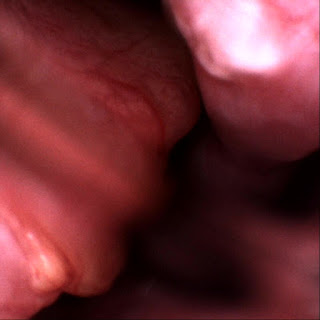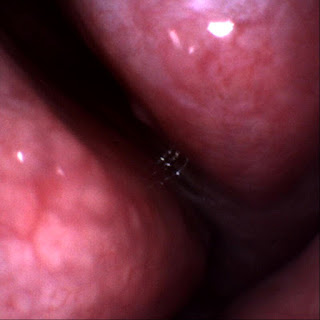Nose Bleeds

Here's a bend in the nasal septal cartilage, also called a deviated nasal septum. It causes disruption to air flow, which leads to drying, scabbing and then new blood vessel formation, which you can see if you look closely. These new blood vessels are not as robust as those originally within the septum, and are prone to rupture, causing nose bleeds, or epistaxis. They can be treated in the clinic with cautery. Longer term a septoplasty will be required to straighten the deviated nasal septum.





